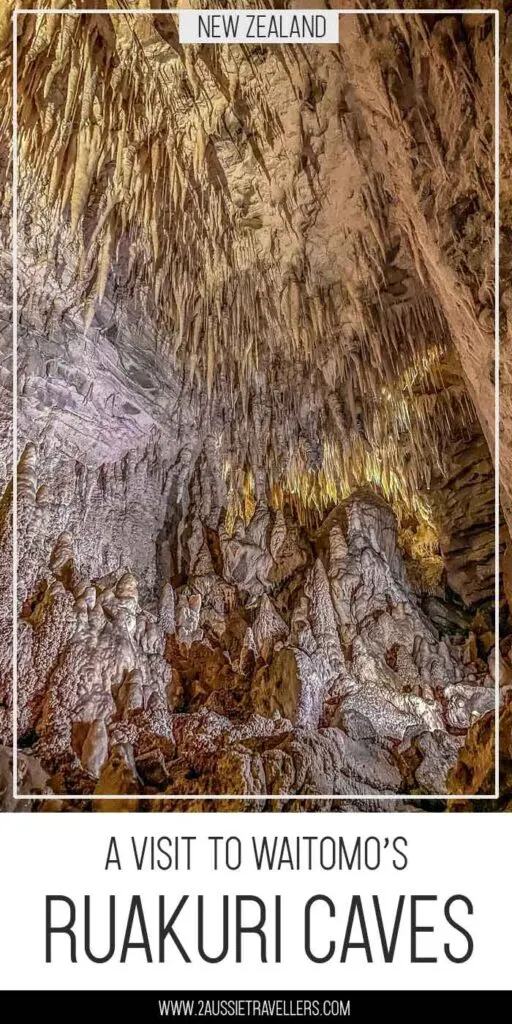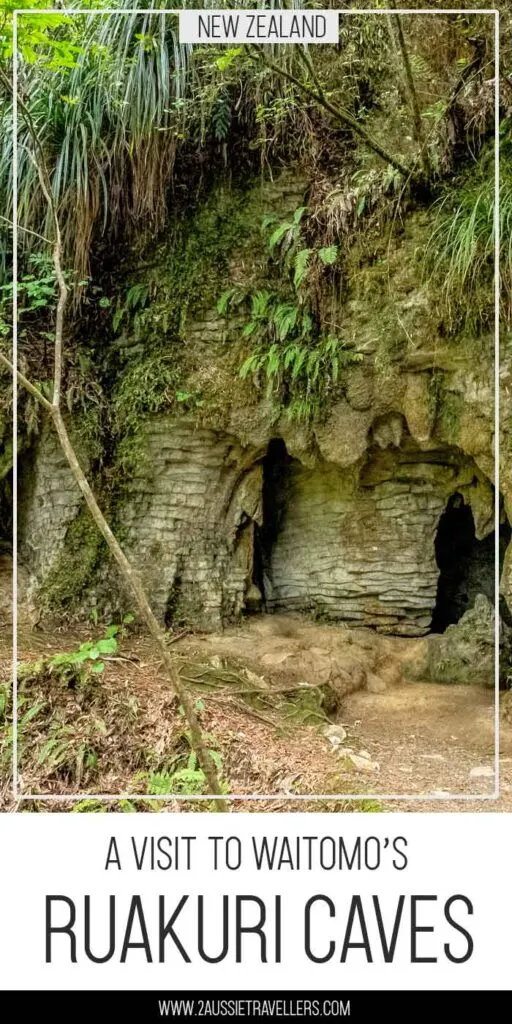The Ruakuri Caves are part of the Waitomo Cave system and home to many of the glow worms that the area is famous for. While the tourist brochures feature photos of the boat tour at the Waitomo Glowworm Caves, and it is absolutely one for your bucket list, we would recommend the Ruakuri Caves less than 3 km down the road just as highly.
While you are in the area you will also want to allow time, either before or after your tour, for the Ruakuri walking track. The Scenic Reserve has free public access and is a great opportunity to experience some of New Zealand native bush, potentially see glow worms in the wild at your own pace and to explore some unique small caves and tunnels.
The Waitomo Caves are ideally placed to stop off on your road trip up or down the north island. It also works as a longer day trip or weekend getaway from Auckland having done it ourselves a couple of times now.
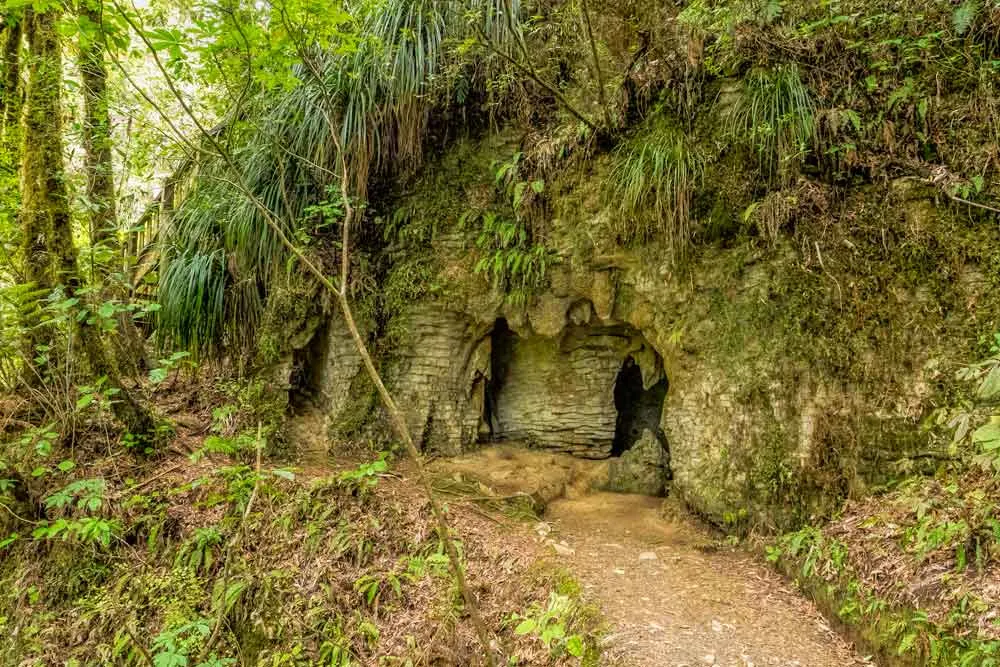
There are three major cave systems in the Waitomo area that you might visit on a tour. The Waitomo glow worm caves boat tour is the one where you float silently in a boat beneath the glow worms this is the bucket list tick for most and one I would suggest any first-time visitor splurges on if they possibly can. There is minimal walking, paths are well-formed and there are handrails but it’s not wheelchair accessible and you do need to be able to get down into one of the boats.
The second set of caves is the Aranui Caves, these are the smallest of the three systems and is a dry cave which means they don’t have glow worms but are richly decorated with high chambers, colourful limestone formations and many unique forms of stalactites and stalagmites.
The third cave system is Ruakuri and is the subject of this article so we’ll discuss it in detail below. It’s a wet cave with a river running through it and subterranean waterfalls. That moisture makes it the perfect environment to support a large population of glow worms. It also has dramatic limestone formations and fossilised remains making it a real all-rounder.
Headed to the Waikato? See our full guide to the Waitomo Caves region and tips for a detour into Middle Earth to experience Hobbiton.
Table of Contents
History of the Ruakuri Caves
The Ruakuri Cave entrance sits within the Ruakuri Scenic Reserve, a 130-hectare block of podocarp forest about 3 km away from the Waitomo glow worm caves. This is the largest of the 3 caves and runs under private land still owned by the family of James Holden. Holden was one of the early settlers in the area who first opened the caves to be enjoyed by the public in 1904.
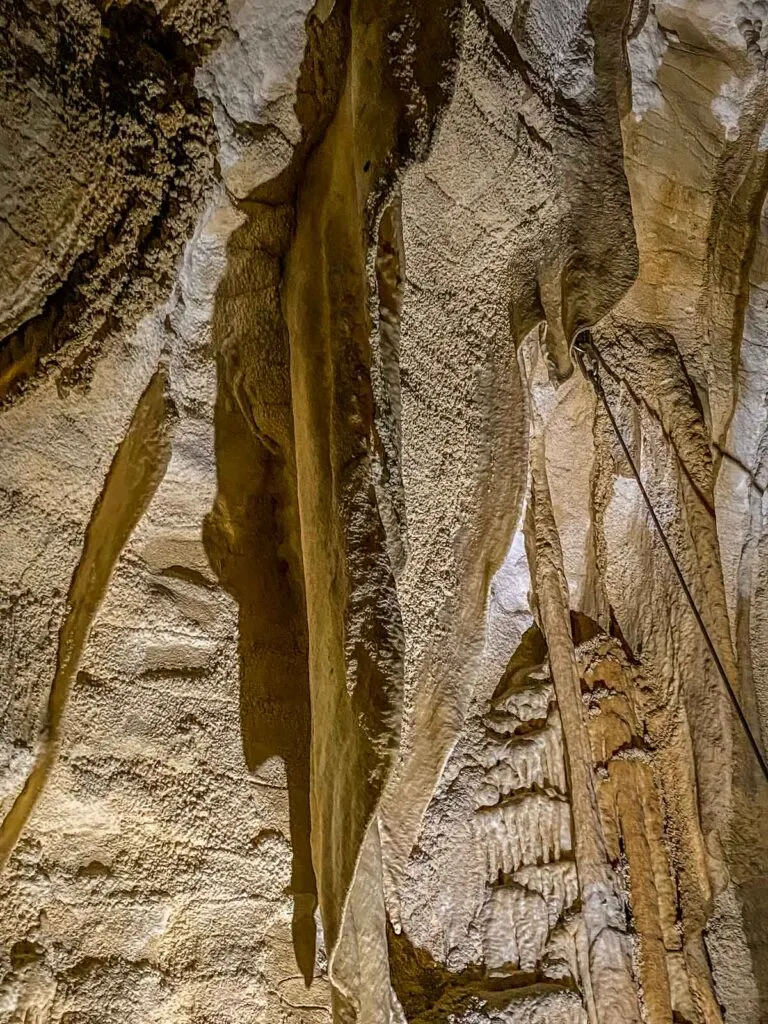
The caves were known to local Māori for at least 100 years before that. Archaeologists have shown this through dating remains found in an ash pit near an original cave entrance. The ash contained remains of at least 20 kiore (Polynesian rats) that were carbon dated between 200 and 400 years old. There is also aMāori burial site just inside the original entrance. This tapu (sacred) site is not publicly accessible and the modern entrance to the caves is located some distance away below the escarpment.
The name of the caves, Ruakuri, isMāori and means den (Rua) of the wild dogs (Kuri) which is thought to date back to it being discovered by a hunter who was chased off by a pack of wild dogs who claimed his catch as he ran off.
Ruakuri Cave Tour
We found the Ruakuri Caves tour a relaxed and authentic experience. In addition to being the longest underground walking tour in New Zealand, this is also the only wheelchair accessible cave we know of in the southern hemisphere.
You start your tour at the Ruakuri Visitor Centre, there is plenty of parking here including for larger vehicles like motorhomes. The centre is a small prefab building, no cafe or anything like that but there are friendly staff, clean toilets and some great information to take in while you wait for your tour.
You leave here on foot and walk down to the cave entrance. The initial impression for me was a little more reminiscent of a stage set than a natural miracle, millions of years in the making. Like the Waitomo glow worm caves, it has a more commercial feel than others we’ve visited like Jenolan Caves and the Capricorn Caves in Australia but it really is just the initial facade designed to protect what lies below.
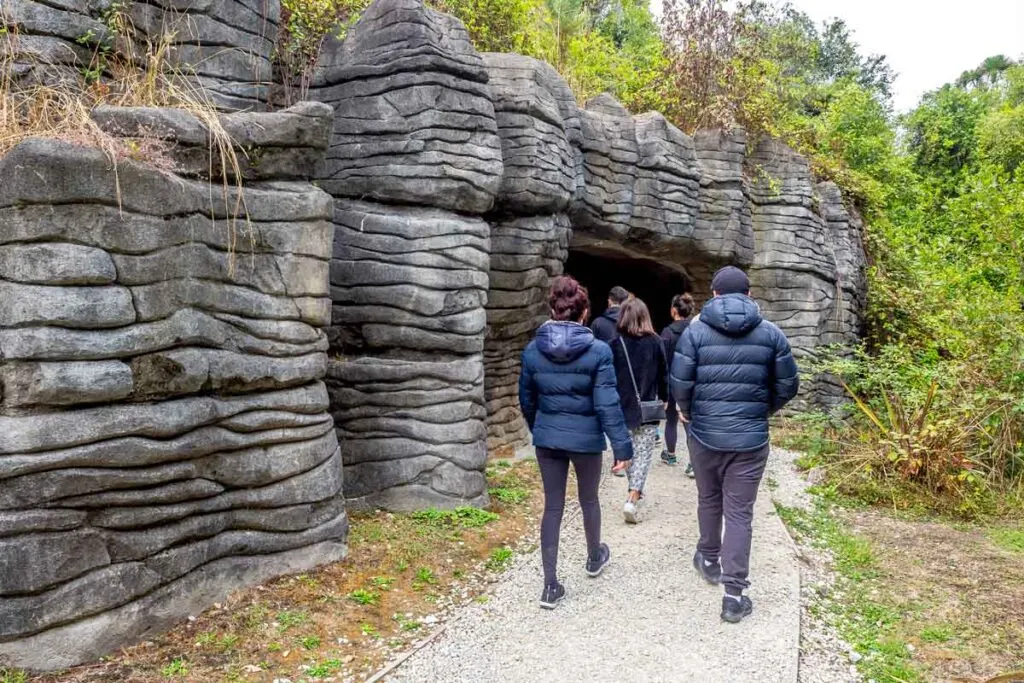
Once inside the entrance, you are looking down on an impressive feat of engineering that takes you to the cave floor. It’s apparently only 15 metres down but the spiralling ramp on a 1/10 incline makes it wheelchair accessible and look like it is much deeper than it actually is.
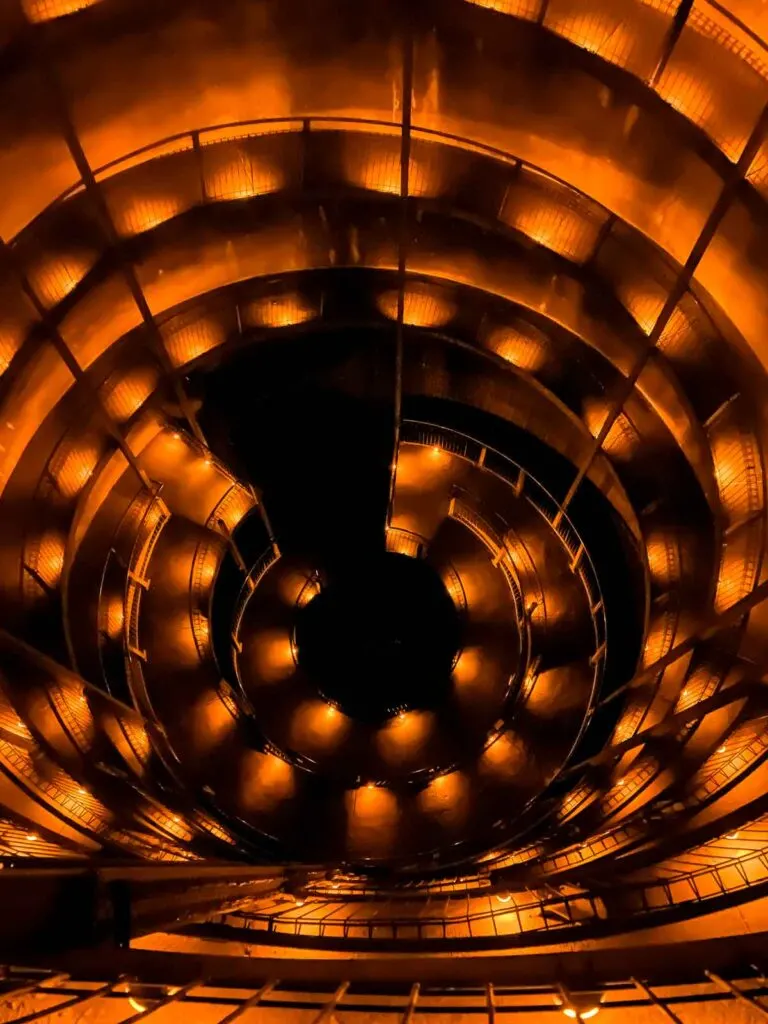
From here you are on a sealed path the whole way through with handrails along most of it. This protects the delicate limestone walls and removes the need for anyone to reach out to stabilise themselves.
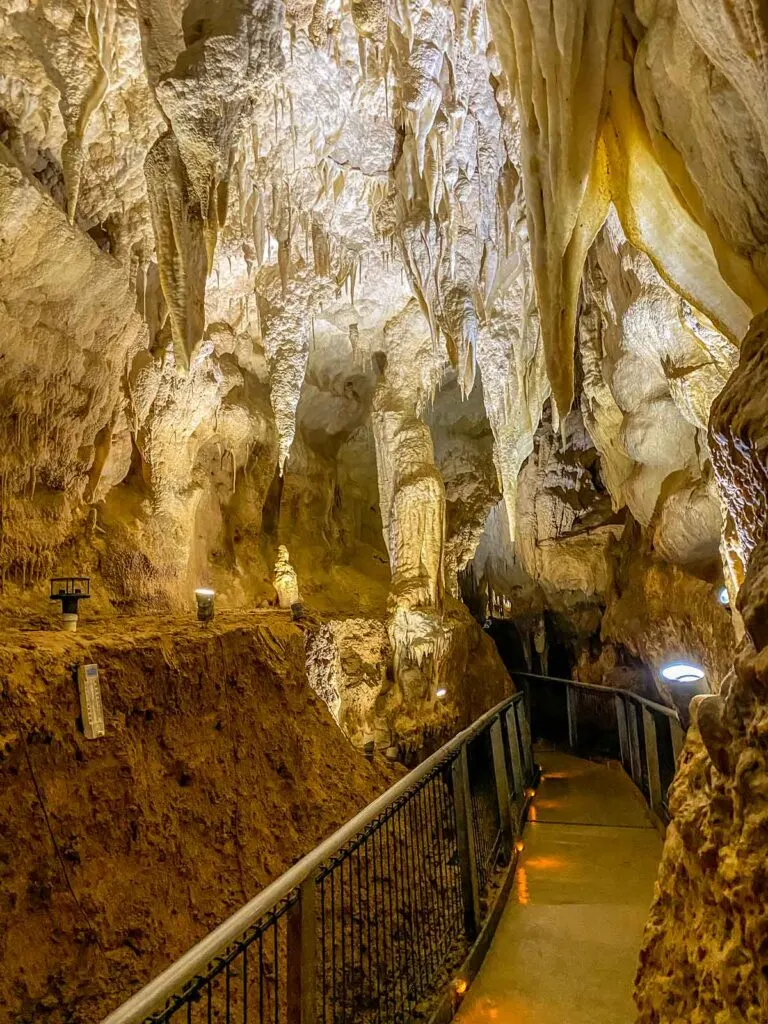
Our guide was excellent. It’s a casual and interactive presentation with questions encouraged. There was a lot more information imparted on this one than the Waitomo tour but you learn about flowstone, shawls, stalactites and stalagmites in terms that are easy to understand and remember. Our guide was also very generous with tips about the local area making sure we didn’t miss some highlights later in the day in the Ruakuri Scenic Reserve and offering up a top tip for lunch at Huhu Cafe.
Ruakuri is a wet cave, meaning that a subterranean river runs through it creating an environment suited to glow worms, you won’t find them in dry caves. There is also a hidden underground waterfall, you won’t see it on this tour but you’ll hear it thundering away. It’s actually only a 1.5-metre drop but the enclosed space makes it sound much larger than it is.
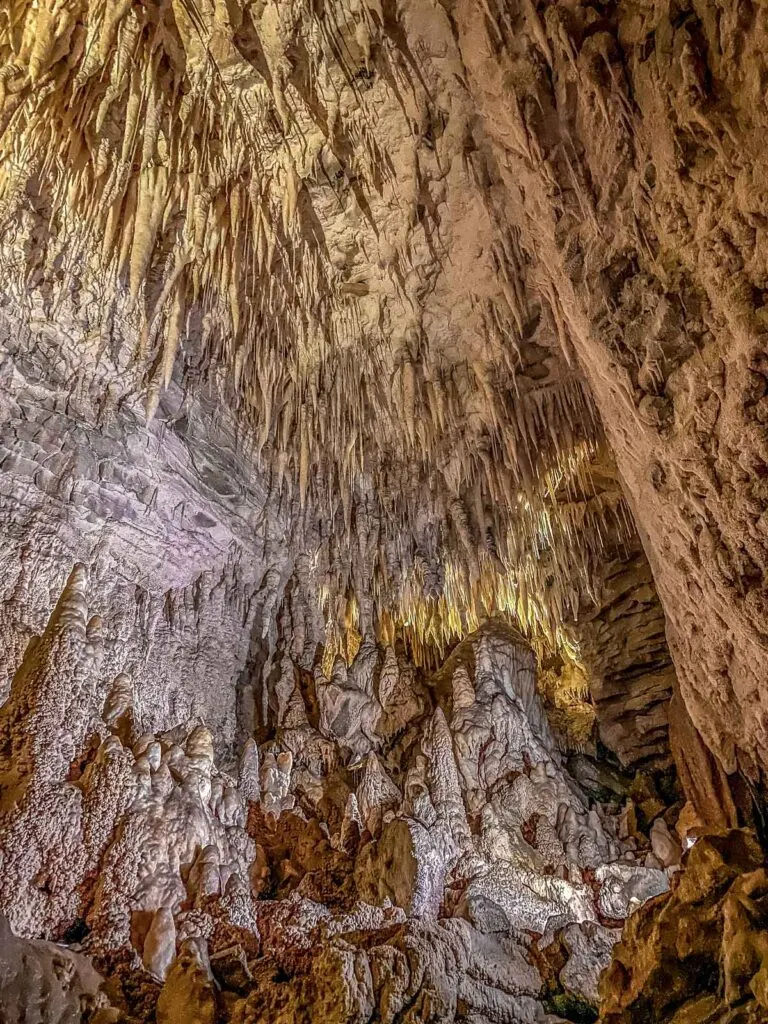
The colour in the delicate limestone structures doesn’t show up well in photography, it’s dark underground meaning on a tour like this you are only getting snapshots with a lot of grain but they give an indication of the beauty inside the cave.
Ruakuri Cave Glow Worms
The New Zealand glowworm or Arachnocampa Luminosa if you want to be formal about it, is a fungus gnat in the larval stage. During this part of its life cycle, it produces blue-green bioluminescence that is essential for it to catch food, eat and survive but in mass, it is also a stunningly beautiful natural phenomenon to observe.
I’m not even going to attempt a photo of glow worms, it is one of those experiences that can only really be enjoyed in person, no snapshot photo will do it justice and those incredible promotional images you see in the brochures take a lot of skill, time, equipment and artistic talent to create.
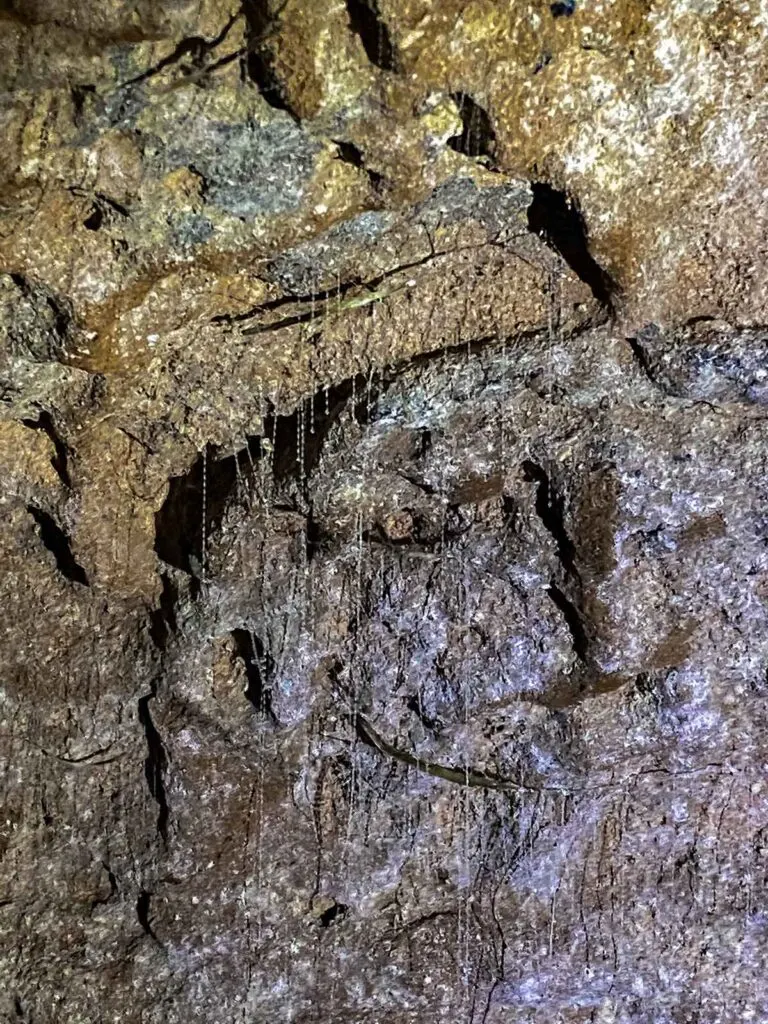
I have included a picture above of some glowworm threads. These are the snares they live in and use to catch food. They are a silk tube coated in mucous that encapsulates the gnat, in the dark the larvae inside glows attracting bugs that become caught in the sticky strands.
Check prices and availability of the Ruakuri Cave tour
Adventure tour at the Ruakuri Caves
If you are feeling a bit more adventurous, are reasonably agile and prepared to get wet then you would probably enjoy the blackwater experience. You float on inner tubes along the subterranean river with a galaxy of glow worms above you, it is definitely one of those incredible life experiences you will talk about for a long time to come. You’ll not only see the underground waterfall from this one but get to jump off it into the dark water below.
You can’t take your own camera along but photos are taken throughout the tour and are available to download later.
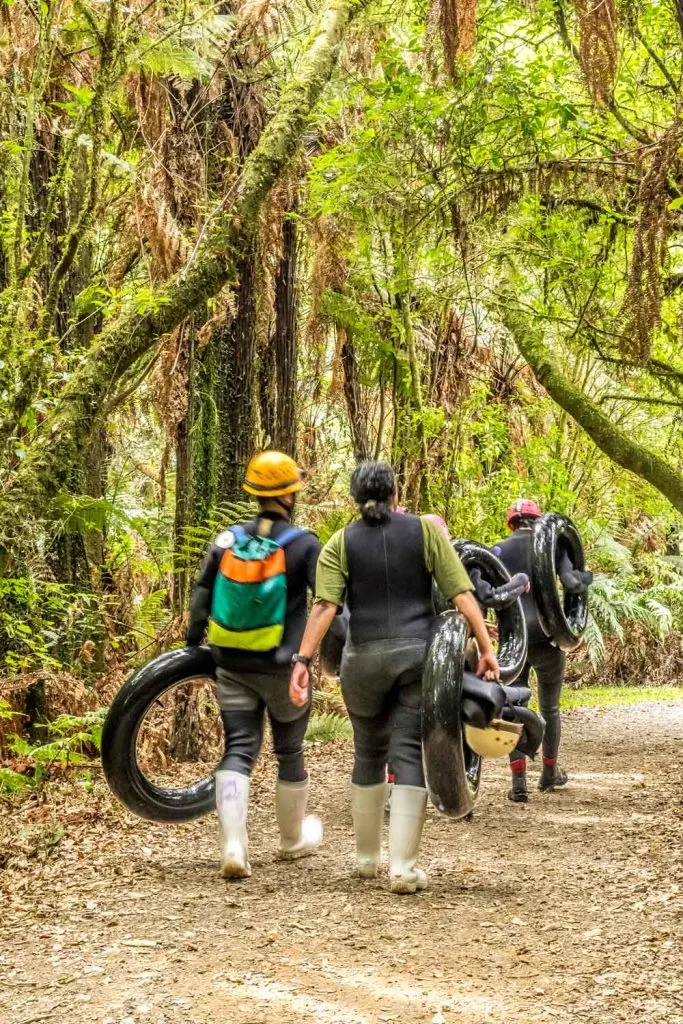
It kind of goes without saying but you’re in the water, inside a cave and a wetsuit can only do so much. It is going to be cold. There’s a hot shower to look forward to at the end and bring something warm to put on when you are done.
Check the pricing and availability of the Ruakuri blackwater tubing tour
Ruakuri Walk (yes it’s free)
We understand that visiting Waitomo can be a bit of a drain on the budget but we do recommend doing at least one, if not two of the cave tours as it really is the best way to see the most dramatic cave structures and an incredible display of glow worms.
That said, there are a few additional things to do in the area that is totally free that you should know about.
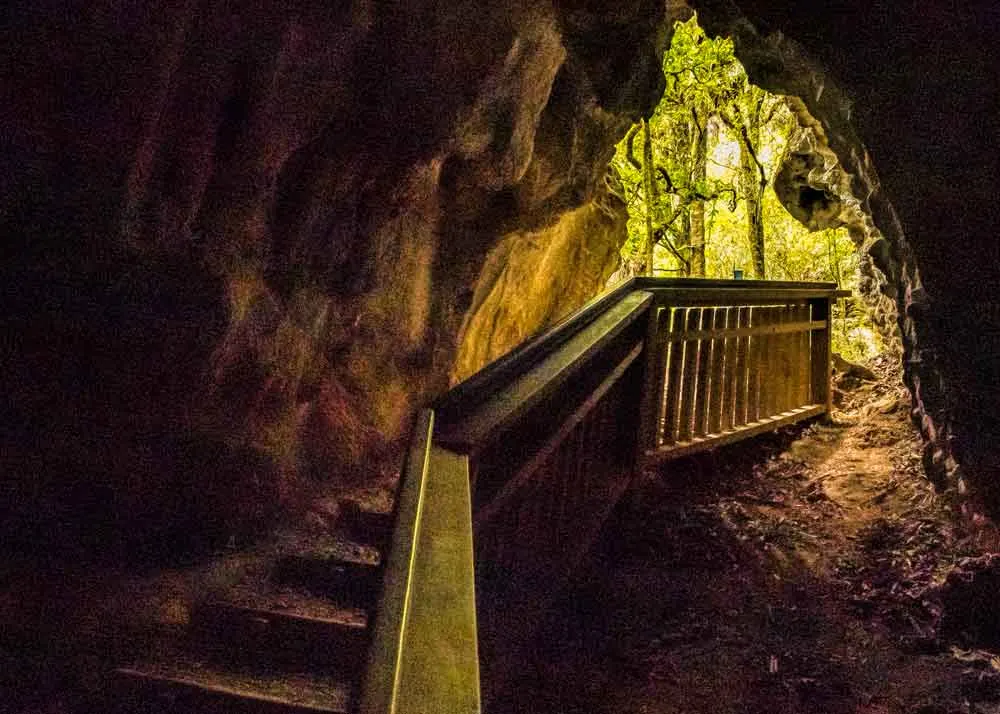
Just across from the Ruakuri Caves Tour entry is the start of the Ruakuri bushwalk, there’s more car parking down here and a small park area. This is the meetup point for the blackwater tour so you might see a few people hanging out with their inner tubes.
Facing the bush you want to head to the left and follow the walking trail, it’s a scenic loop track with plenty to see and detours into the caves along the way. All up it is only around 1 km walking on a well-formed path but allow at least an hour to enjoy it.
The walkway is a combination of dirt and gravel paths, boardwalks, bridges and steps, the loop track isn’t suitable for wheelchairs.
The Ruakuri Walk after dark
If you are staying overnight in the Waitomo area you may want to head back to the Ruakuri bush walkway again after dark. The glow worms that you’ll see underground during the day can be seen for free at your own pace in the evening. Look into the open caves and along the damp river banks and you should be able to spot them.
You’ll want to wear supportive shoes, it’s easier to misstep and twist an ankle in the dark and also take a torch along with you. It is a well-formed track but there are some areas with steep drop-offs. Keeping the torch pointed at the ground will help you make your way along safely but once you spot a hint of the glow worms turn it off and let your eyes adjust to the dark.
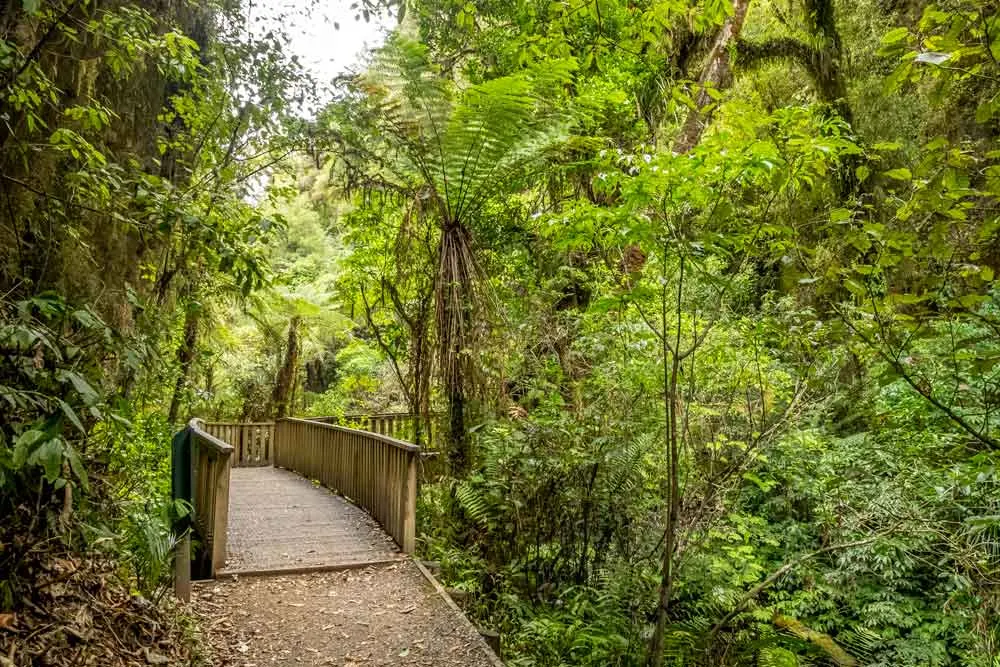
The reason for turning off all artificial light is three-fold. Firstly the natural spectacle is far more impressive once your eyes adjust and without any ambient light, secondly, they will turn off their glow if exposed to direct light so you’ll miss out on seeing them and finally you can harm and ultimately kill the glow worms because it disrupts their feeding cycle when they turn off the light that is there to attract food to them.
A couple of suggestions to head to are the first and second bridge, these should give you a good view of the glow worms and don’t require navigating any steep or narrow sections in the pitch dark. If you are confident of your footing you might also continue up through the cave in the hillside, turn right and then go down the stairs into the grotto.
Where to stay in Waitomo
If you want to take advantage of the night walk you’ll probably want to stay in the area as the drive back to Auckland or through to Rotorua it will take around 3 hours. This also means you’ll be able to join the first tour the next day, take a peaceful walk before the crowds arrive or head on to your next destination.
There are several places to stay overnight in the area but a couple that is popular is the Waitomo Caves Guest Lodge and the Waitomo Boutique Lodge.
At Waitomo Caves Guest Lodge your hosts are Lyn and Richard. The property is in the heart of Waitomo and is highly rated. The rooms are clean and comfortable as you would expect, the price point is affordable and the hosts have a lot of local knowledge to make your stay extra memorable.
Another option is a bit more of a splurge but the Waitomo Boutique Lodge is a unique New Zealand experience. It’s set on 2500 hectares with expansive views out across rural Waikato to the Coromandal Ranges and Ngauruhoe ski fields. It is set in immaculate gardens with a pool and hot tub, tennis court and fitness centre. The hosts here are Leanne and Rodney who are widely praised for the friendly experience and excellent meals.
For those with self-contained motorhomes and looking for free camping, Roselands Roselands has in the past generously offered the opportunity to park overnight in their large car park with a bush backdrop. Unfortunately, they were forced to close during 2020 and the business is now up for sale. Once normal tourism returns we will update here with current options.
If you found this article useful please consider saving it to Pinterest. It makes it easy for you to find it again, it helps us, and it helps other travellers to find the information they are looking for.
